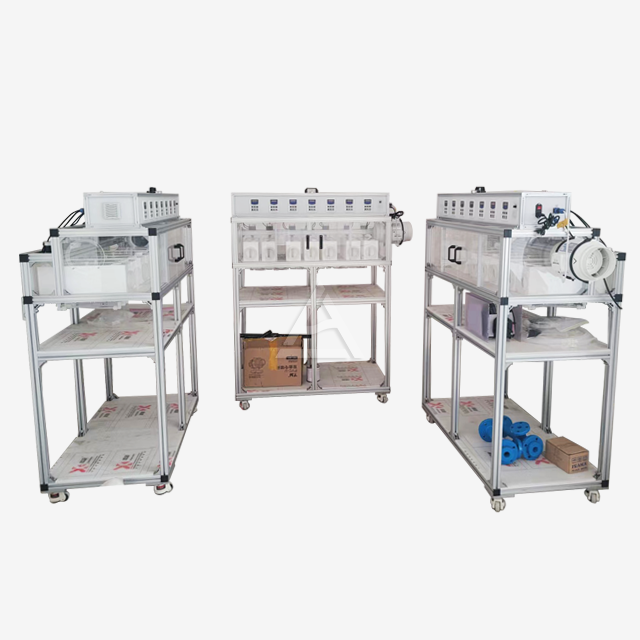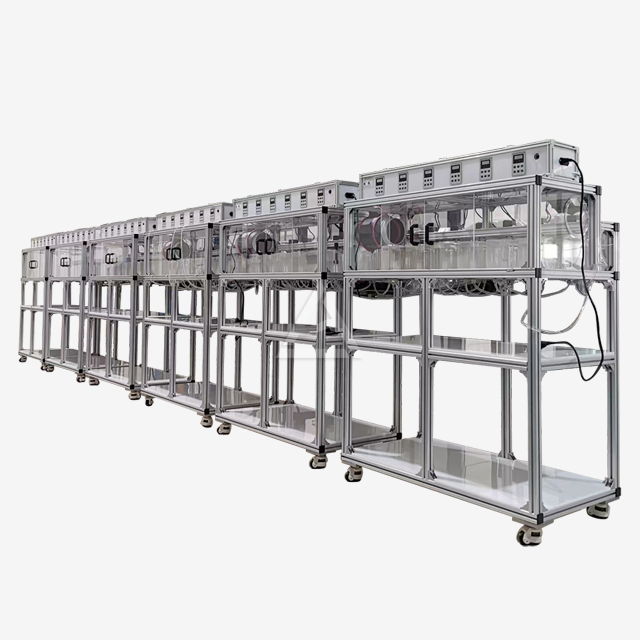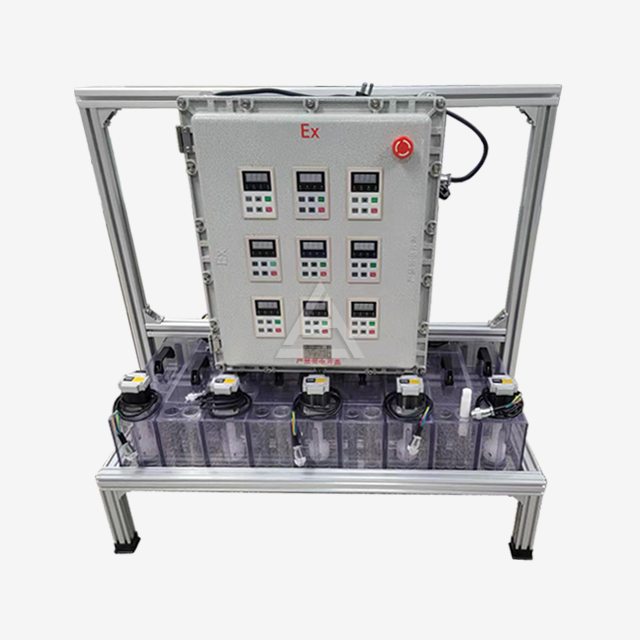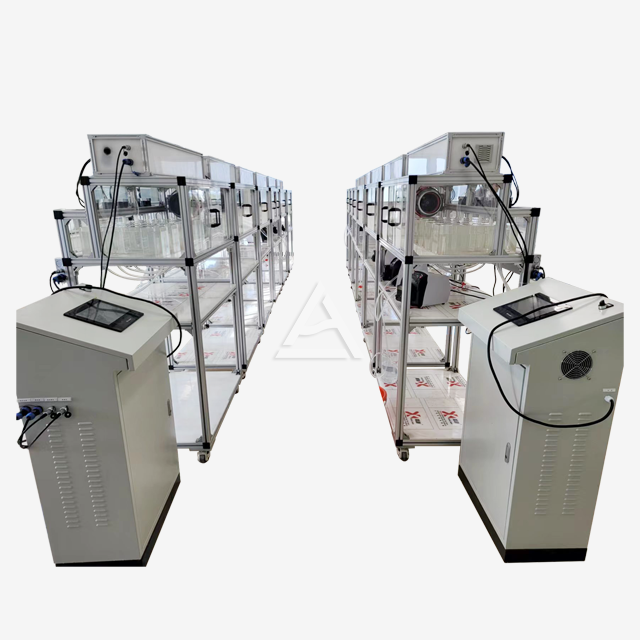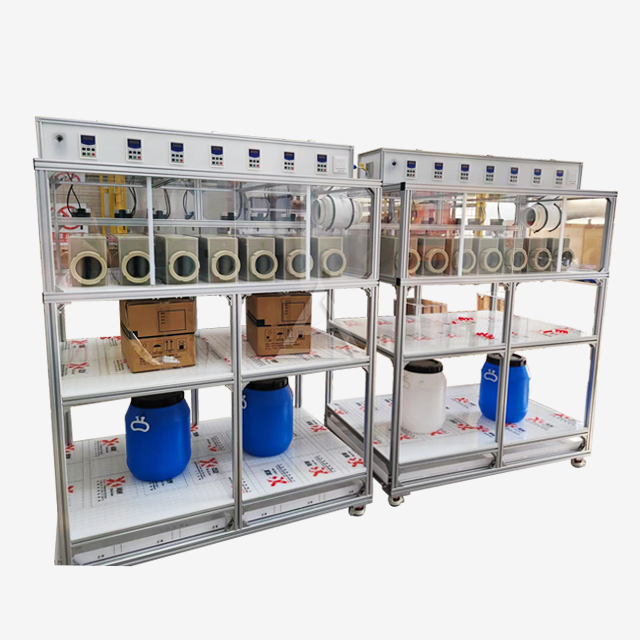What is an Extraction Device?
An extraction device is a specialized piece of equipment designed to separate valuable compounds or materials from a mixture, often using a solvent or other medium to isolate specific components. These devices are pivotal in industries like chemical processing, pharmaceuticals, metallurgy, and waste management, where precision and efficiency are paramount. At its core, an extraction device facilitates the transfer of desired substances from one phase (solid, liquid, or gas) to another, leaving impurities behind. Cuiyan Technology excels in crafting such equipment, offering solutions like box-type extraction tanks, tubular extraction tanks, micro extraction tanks, centrifugal extractors, and extraction towers to meet diverse industrial needs globally.
Understanding the Core Functions of Extraction Devices
Extraction devices are the unsung heroes of many industrial processes, enabling the isolation of valuable materials with remarkable efficiency. To appreciate their significance, it's essential to delve into their core functions, the industries they serve, and the innovative designs that make them indispensable.
How Extraction Devices Work?
At the heart of every extraction device lies a simple yet ingenious principle: selective separation. These machines leverage differences in solubility, density, or chemical affinity to isolate target compounds. A solvent is typically introduced to dissolve the desired material, which is then separated from the remaining mixture. Depending on the equipment, this process might involve agitation, centrifugation, or gravity-based settling. The result is a purified product, free from unwanted contaminants, ready for further processing or direct use. This mechanism is crucial in applications ranging from extracting precious metals to producing high-purity pharmaceuticals.
Industries That Rely on Extraction Technology
Extraction devices are integral to a wide array of sectors, each with unique demands. In the pharmaceutical industry, they are used to isolate active ingredients from natural sources, ensuring the potency of medicines. The chemical sector employs these devices to refine raw materials, while the food and beverage industry uses them to extract flavors, oils, and nutrients. In metallurgy, particularly hydrometallurgy, extraction equipment is vital for recovering metals like copper, nickel, and cobalt from ores or waste. The environmental sector also benefits, using extraction technology to treat waste streams, such as electroplating sludge, transforming liabilities into valuable resources.
Innovative Designs in Extraction Equipment
The evolution of extraction devices has been marked by innovation, with designs tailored to specific challenges. Box-type extraction tanks, for example, offer robust solutions for large-scale operations, providing ample space for thorough mixing and separation. Tubular extraction tanks, on the other hand, excel in continuous processing, ideal for high-throughput industries. Micro extraction tanks cater to precision tasks, handling small volumes with exactitude, while centrifugal extractors use high-speed rotation to achieve rapid separation. Extraction towers, with their vertical design, optimize gravity-based separation, making them suitable for complex mixtures. These advancements ensure that extraction devices meet the diverse needs of global industries.
The Benefits of Using High-Quality Extraction Devices
Investing in superior extraction equipment yields significant advantages, from operational efficiency to environmental sustainability. Understanding these benefits highlights why businesses worldwide prioritize cutting-edge extraction technology in their operations.
Enhancing Efficiency and Productivity
High-quality extraction devices are engineered to maximize output while minimizing resource use. By optimizing the separation process, they reduce the time and energy required to achieve desired results. For instance, centrifugal extractors can process large volumes in minutes, thanks to their high-speed operation, while micro extraction tanks ensure precision in small-scale applications, reducing waste. This efficiency translates into higher productivity, allowing businesses to meet growing demands without compromising quality. In industries where time is a critical factor, such as pharmaceutical production, this advantage is invaluable, enabling faster market delivery.
Ensuring Product Purity and Quality
The primary goal of any extraction process is to obtain a pure, high-quality product. Advanced extraction devices achieve this by minimizing contamination and ensuring consistent results. For example, in the recovery of precious metals, equipment like extraction towers can isolate metals with exceptional purity, free from impurities that might degrade their value. Similarly, in the food industry, extraction technology ensures that flavors and nutrients are extracted without compromising their integrity. This focus on quality not only enhances the final product but also builds trust with customers, reinforcing brand reputation in competitive markets.
Supporting Sustainable Practices
Sustainability is a growing priority across industries, and extraction devices play a pivotal role in achieving it. By enabling the recovery of valuable materials from waste, these machines reduce the need for virgin resources, lowering environmental impact. In the treatment of electroplating sludge or metal-containing waste, for instance, extraction equipment transforms hazardous materials into reusable resources, mitigating pollution. Moreover, modern designs prioritize energy efficiency, reducing the carbon footprint of industrial processes. This dual focus on resource recovery and energy conservation aligns with global sustainability goals, making extraction technology a cornerstone of eco-conscious operations.
Choosing the Right Extraction Device for Your Needs
Selecting the appropriate extraction equipment is a critical decision that can impact the success of your operations. With various options available, understanding key considerations, customization possibilities, and real-world applications can guide you toward the best choice.
Key Factors to Consider
When choosing an extraction device, several factors come into play. The nature of the material being processed is a primary consideration - solids, liquids, or gases each require different handling. The scale of operation also matters; large-scale industries might opt for box-type or tubular extraction tanks, while smaller, precision-driven tasks benefit from micro extraction tanks. Efficiency, durability, and ease of maintenance are equally important, as they affect long-term performance and cost. Additionally, compliance with industry standards and regulations ensures safety and reliability, particularly in sectors like pharmaceuticals and waste management.
Customization Options for Specific Applications
One of the strengths of modern extraction technology is its adaptability. Leading manufacturers, such as Cuiyan Technology, offer tailored solutions to meet unique challenges. For instance, extraction towers can be customized in height and diameter to handle specific flow rates, while centrifugal extractors can be adjusted for varying separation speeds. This flexibility is crucial in industries like hydrometallurgy, where the composition of ores or waste streams can vary widely. Customization ensures that the equipment not only meets current needs but also adapts to future demands, providing a scalable solution for growing businesses.
Real-World Applications and Success Stories
The impact of extraction devices is best illustrated through practical examples. In the recovery of copper from waste, tubular extraction tanks have enabled companies to achieve high yields while minimizing environmental harm. In the pharmaceutical sector, micro extraction tanks have been instrumental in isolating rare compounds from plant materials, paving the way for groundbreaking treatments. Meanwhile, centrifugal extractors have revolutionized the processing of nickel-based alloys, offering rapid, efficient separation that traditional methods cannot match. These success stories underscore the transformative potential of extraction technology, proving its value across diverse applications and industries.
Conclusion
Extraction devices are indispensable tools in modern industry, offering efficient, high-quality solutions for separating valuable materials from complex mixtures. From enhancing productivity to supporting sustainability, their benefits are far-reaching, making them essential for businesses worldwide. By understanding their functions, advantages, and selection criteria, you can harness their potential to drive innovation and growth in your operations. Whether you're in pharmaceuticals, metallurgy, or waste management, the right extraction equipment can be a game-changer.
Contact Us
Ready to elevate your operations with cutting-edge extraction device? Cuiyan Technology offers tailored solutions to boost efficiency, quality, and sustainability. Contact us today at wangzhijun@cuiyan-tec.com to explore how our expertise can benefit your business.
References
Smith, J. A. (2020). Principles of Industrial Extraction Technology. New York: Chemical Engineering Press.
Patel, R. K. (2019). Advances in Solvent Extraction Systems. London: Process Engineering Publications.
Nguyen, T. H. (2021). Hydrometallurgy and Waste Recovery Techniques. Berlin: Springer Verlag.
Brown, L. M. (2018). Design and Applications of Centrifugal Extractors. Chicago: Industrial Technology Institute.
Garcia, E. S. (2022). Sustainable Practices in Chemical Extraction. Sydney: Green Process Innovations.
Kumar, V. (2020). Extraction Equipment: Design and Optimization. Tokyo: Asia-Pacific Engineering Review.




